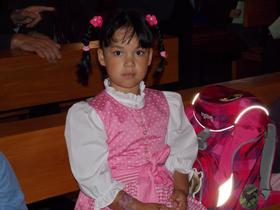Financing a Boarding School Education (2025 Update)
Sending a child to a boarding school remains one of the most significant educational investments a family can make. In 2025, as tuition continues to climb and financial-aid models evolve, families must approach the process with strategy, transparency and foresight. This article updates key trends, policies and payment options for boarding school financing — and builds on our guide at BoardingSchoolReview.com to support parents, students and educators.
1. Understanding the Cost Landscape
For 2025, the sticker price of a boarding school is higher than ever. According to recent data from Boarding School Review, the typical range for full boarding tuition is $60,000 to $80,000 per year. Five-day boarding options average around $55,000, while seven-day boarding approaches $69,000.
For example:
St. George’s School lists boarding tuition at $77,950 for 2025-26.
Blue Ridge School lists seven-day boarding at $68,850 and five-day at $57,500 for 2025-26.
When assessing cost, families should remember: tuition is only part of the equation. Add-ons such as room, board, health services, technology fees, travel and co-curricular activities often add $5,000-$15,000 or more annually.
2. Why Tuition Keeps Rising
Several forces drive the rise in boarding school costs:
Staffing and faculty compensation: Boarding schools increasingly maintain low student-to-teacher ratios (often 6:1 or 7:1) and hire boarding-life professionals.
Program complexity: From STEM labs to sustainability initiatives to global travel, new programmes raise overhead.
Facilities, maintenance and boarding life: Dorm upkeep, housekeeping, meals, health centre staffing and 24-hour supervision add significant cost.
Inflation and economic pressure: Private school operations are not immune to rising wages, utilities and supply costs.
As one recent analysis noted, tuition increases in the private K–12 space have outpaced many expectations.
3. Financial Aid Trends in 2025
Despite high headline tuition, more boarding schools are making meaningful aid available. Key trends include:
• Broad participation in aid programmes.
Data show that roughly 34-45 % of boarding students receive some form of financial assistance in 2025. One compilation lists 40-45 % as “typical.”
• Need-based rather than merit-only.
Most boarding schools focus financial aid on demonstrated need rather than purely on merit. Admissions materials emphasise grants (not loans) covering tuition, board and fees. Ivy Scholars
• Income-cap or percentage-of-income models.
Some schools now guarantee free or near-free tuition for families below certain income thresholds. For example Deerfield Academy reported that for U.S. families earning under $150,000, tuition would be zero, and for those above the limit the charge may be capped at 10 % of income.
• Asset-sensitive calculations.
Schools increasingly look beyond income to evaluate assets, home equity, siblings in school, and extenuating circumstances.
• International student considerations.
While many U.S. boarding schools welcome international students, financial aid for them is often more limited. cbury.org
4. Payment and Financing Options
Families have several ways to manage cash flow and reduce financial strain:
Installment plans. Many schools provide monthly or quarterly payment schedules instead of one lump sum.
Sibling discounts or multi-child scholarships. If more than one child attends the same institution (or partner schools), discounts of 5–10 % may apply.
Work-study or on-campus employment credits. Some boarding schools allow students to engage in campus jobs, with modest tuition offsets.
Scholarships (merit or need). While merit scholarships are less common than need-based grants in boarding schools, they exist—especially for arts, leadership or special programmes.
Loans. Some families supplement with education loans (though fewer boarding schools encourage debt for high school than for college). Be sure to understand any interest or repayment obligations.
State or regional voucher programmes. In certain states, education savings accounts or vouchers may apply even for private/boarding K–12 settings. For example, K–12 scholarship policy developments have surfaced around broader school-choice expansions.
5. What Families Should Ask When Exploring Aid
When evaluating a boarding school, be sure to clarify:
What percentage of the student body receives financial aid and what the average grant is. Boarding School Review
Does the school meet 100 % of demonstrated need, and is admissions need-blind or need-aware?
Are there income caps or guaranteed “free-tuition” thresholds?
What happens in future years: Will aid renew annually based on income/assets or can it change unexpectedly?
What out-of-pocket costs remain after aid (e.g., travel, advanced courses, equipment)?
For international students: are they eligible for the same aid? Are there additional fees?
What payment-plan options exist? Are there sibling discounts?
Are merit scholarships offered, and what are the criteria/renewal rules?
How transparent is the process: Can the school provide sample grant letters or typical family contribution scenarios?
6. Real-World Example
Consider a family looking at a boarding school with a published tuition of $75,000. The school reports 38 % of students receive aid, with an average boarding grant of $50,000. A family with household income of $120,000 and two children may apply for need-based aid. The school assesses that the family can contribute, say, $15,000 annually. After aid, the net cost per student drops to $60,000. The family then uses a 10-month payment plan to manage the expense.
Contrast this with a lower-cost boarding school listing five-day boarding at $52,000 which offers strong aid and sibling discounts. For the same family, the net cost might drop below $40,000 per child. The key take-aways: difference between list price and net cost, and the importance of comparing net cost and support.
7. Is Boarding School Worth the Cost?
From a value-perspective, boarding schools offer immersive educational environments, strong teacher-student engagement, rich co-curricular programmes and a campus community that supports both academic and personal growth. Research shows that well-matched boarding learners often matriculate to selective colleges and benefit from lifelong networks.
That said, the decision must align with family goals, finances and the individual student’s readiness. A high tuition tag does not guarantee a better fit. Families should use net cost (after aid), fact-find around campus fit, academic programmes, and student support rather than simply chasing prestige.
8. Planning Ahead: Timeline and Strategy
18–24 months out: Begin researching schools, visit campuses, and request financial-aid policy information.
12–18 months out: Complete school admissions applications and, simultaneously, the financial-aid forms (PFS or SSS, tax-return documentation). Schools often set deadlines in December or January.
6–12 months out: Review award letters carefully. Compare net cost across schools, not just list price.
Before face-paid date: Choose payment plan, decide on options such as multi-child discounts, and confirm what happens in year 2, year 3 etc.
Annual renewal: Understand if the aid package renews automatically or requires re-application and how changes in income/assets impact the award.
9. Key Takeaways for Parents, Students and Educators
Net cost matters more than headline tuition: A $75,000 list price may become $35,000 after aid.
Apply early and accurately for aid: Missing deadlines or incomplete documentation reduces options.
Ask about multi-year support: Will your aid change as your student advances?
Consider alternatives: Five-day boarding, state-supported programmes, or lesser-known schools may offer excellent value.
Browse internal resources: Visit BoardingSchoolReview.com’s financing section for payment-plan insights and school-by-school comparisons.
Educators should build financial literacy into advising: Help families interpret award letters, understand asset disclosure and compare net costs across institutions.
Conclusion
In 2025 the investment required for a boarding school education is substantial, but the actual cost to a family can vary dramatically based on financial-aid opportunities, school policies and payment strategies. With tuition averages ranging from roughly $55,000 to $80,000, families should focus less on published price and more on what they will actually pay. By understanding aid models, comparing net cost, and engaging early in the process, parents and students can make informed decisions that make boarding school both accessible and aligned with long-term educational goals.
This refreshed guide is meant to support your planning, research and conversations — helping you approach the financial aspects of boarding school with clarity, confidence and strategic insight.














